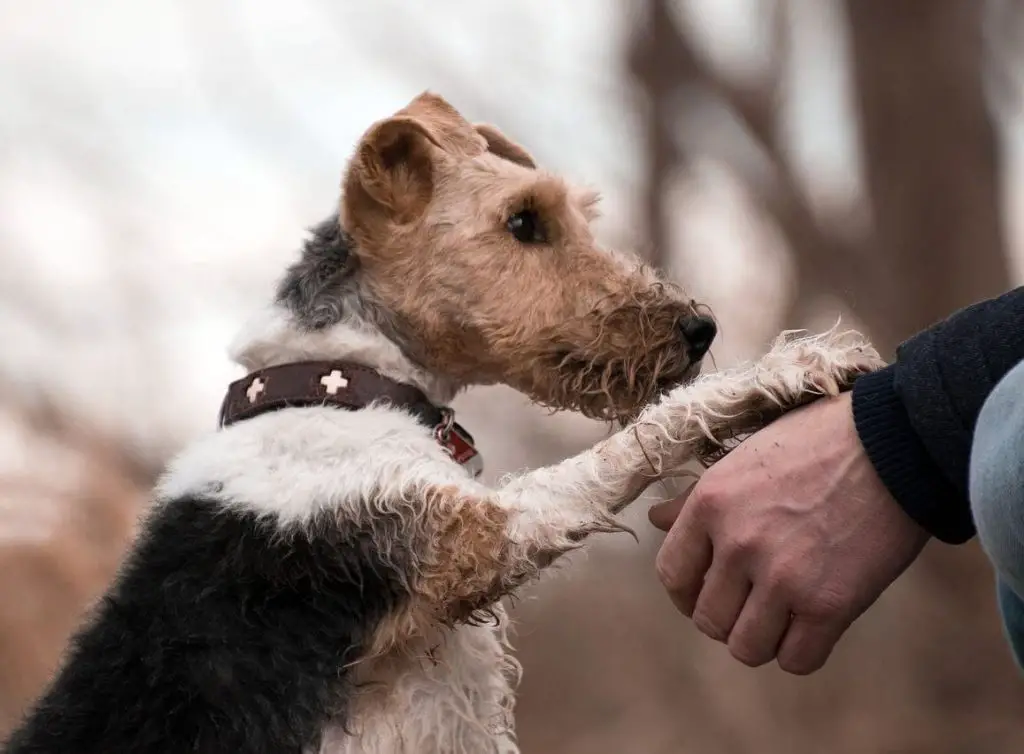Have you ever wondered what your furry friend is trying to communicate when they gently place their paw on your arm? Dogs, with their intricate ways of expressing themselves, often leave us questioning the meaning behind their actions. In this article, we delve into the nuances of canine communication, exploring the various interpretations behind your dog’s paw placement.

Affection and Attention Seeking
When your dog places their paw on your arm, it could signify a multitude of things, primarily revolving around affection and attention-seeking behaviors:
- Showing Love and Affection: This gesture often reflects your dog’s desire to connect with you on an emotional level. Their soft eyes and relaxed body posture convey warmth and affection, indicating a longing for your attention and companionship.
- Requesting Something: Sometimes, your dog may employ their paw as a subtle way of requesting something from you, whether it’s food, water, playtime, or a stroll outdoors. This gentle nudge serves as a polite reminder of their needs and desires.
Communication and Comfort
Beyond seeking attention, your dog’s paw placement can also serve as a means of communication and seeking comfort:
- Expressing Anxiety or Insecurity: In unfamiliar or distressing situations, dogs may paw at you as a sign of anxiety or insecurity, seeking reassurance and comfort from their trusted human companion.
- Seeking Guidance or Direction: Your dog may look to you for guidance when they’re uncertain about what to do next. This is particularly evident during training sessions or when navigating unfamiliar environments, where they rely on your cues and support.
Understanding the Context
To accurately decipher the message behind your dog’s paw placement, it’s essential to consider various factors:
- Body Language: Observe your dog’s overall body language for cues. A relaxed tail wag accompanied by pawing likely indicates affection, while signs of tension or distress may suggest underlying anxiety or fear.
- Situation: The context in which the pawing occurs can provide valuable insights into your dog’s intentions. Whether they’re hungry, excited, or feeling uneasy, understanding the situation helps in interpreting their behavior accurately.
- Past Experiences: Previous encounters and reinforcements play a significant role in shaping your dog’s behavior. If they’ve been rewarded for pawing in the past, they’re likely to repeat the action in similar scenarios.
Responding to Your Dog’s Pawing
How you respond to your dog’s pawing can influence their behavior and emotional well-being:
- Positive Reinforcement: Acknowledge and reward your dog’s affectionate gestures with gentle pets and praise. This reinforces their bond with you and encourages positive behavior.
- Address Their Needs: If your dog is signaling a specific need or desire through pawing, such as hunger or the urge to go outside, respond accordingly. Meeting their needs promptly fosters effective communication and mutual understanding.
- Discourage Unwanted Behavior: In instances where pawing becomes excessive or is linked to negative emotions, avoid reinforcing the behavior with attention or rewards. Instead, redirect their focus and provide alternative outlets for their energy and emotions.
In essence, every dog possesses a unique communication style, shaped by their personality, experiences, and relationship with their human companions. By paying attention to your dog’s body language, understanding the context, and responding thoughtfully to their cues, you can strengthen your bond and foster a deeper understanding of your canine companion. So, the next time your dog places their paw on your arm, remember to listen with your heart as well as your mind, for in those subtle gestures lie the language of love and companionship that transcends words.
